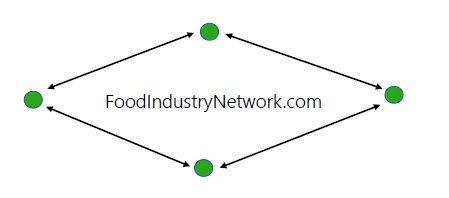Opinion: One Health approach gaining ground, and it’s about time
I don’t always agree with Sylvain Charlebois has to say, but I do agree with him on one thing — that avian influenza deserves more attention than it has been receiving.
In a commentary written less than two weeks before Christmas titled “Let’s Talk Turkey”, the professor in food distribution policy and senior director of the Agri-Food Analytics Lab at Dalhousie University pointed to the fact that retail prices for chicken, turkey and eggs have been “heavily impacted by [avian] flu for months” and advised consumers to buy their Christmas turkey sooner than later.
Charlebois noted the increase in retail prices consumers dealt with last year as a result of the current avian influenza outbreak, which began in the spring of 2021. In the U.S., where avian influenza has led to the culling of over 50 million commercial poultry, egg prices jumped 40 per cent in 2022 over the previous year, “a record.”
In Canada, egg prices increased close to 20 per cent in some regions, “the largest annual increase in 50 years,” he said.
He noted poultry meat didn’t fare much better: data from his lab showed chicken prices increased 17 per cent on average in Canada, and areas where avian influenza was most prevalent (such as Alberta, Ontario, and British Columbia), turkey prices increased as much as 20 per cent.
But it isn’t just the sticker shock that is concerning; it’s the zoonotic potential of avian influenza, the possibility that it could infect the human population.
In a May 2022 article in The Conversation, Dr. Shayan Sharif, professor of immunology and associate dean, research and graduate studies at the Ontario Veterinary College (OVC) and Dr. Jeffrey J. Wichtel, OVC dean, said that although the H5N1 strain of avian influenza circulating last spring, and that continues to circulate, is capable of crossing from birds to mammals, including humans.
They noted that while (at the time the article was published) that there were only two known cases of human infection with the current H5N1 strain, previous H5N1 strains have been responsible for 880 human infections and over 450 deaths. Those infected had been in close contact with infected birds.
“However, there is a concern that, through mutations and genetic exchanges, H5N1 avian influenza virus may gain the ability to transmit from birds to humans and possibly from humans to humans.”
They advocate for the need for a ‘One Health’ approach to dealing with avian influenza. One Health approaches animal and human disease in a cohesive manner, placing equal importance on measures to address disease and pathogens from animal, human and environmental health perspectives.
The poultry industries in North America and other countries have greatly improved their mitigation strategies for avian influenza in the past 20 years, and surveillance measures have also improved. But the H5N1 strain currently affecting poultry and birds globally is tenacious, and culling records have already been set in the U.S. with this strain.
This is in large part due to climate, which has contributed to the “uniqueness” of this particular virus strain, panelists said at the Poultry Health Day held in Stratford last July. As our freelance writer Stew Slater wrote in his coverage of the event, Canadian Wildlife Services population management biologist Christopher Sharp said “one route taken by this virus from Europe to North America was in a species of wild duck that arrived in Newfoundland for the first time ever due to climate-altered migration patterns.”
At the same event, Dr. Jean-Pierre Vaillancourt, professor of avian medicine at the University of Montreal, told attendees that the first five domestic cases of avian influenza in Ontario occurred during the first two weeks of April, when normally few migratory birds are in the province.
“But with climate change, we have a change in the biology of these wild birds” he said, noting that they are now starting to arrive earlier on their northward journey and linger later during their southward return.
According to its December 2022 global highly pathogenic avian influenza global summary, the Feather Board Command Centre (FBCC) said the global incidence of new high path avian influenza H5N1 cases has been steadily increasing over the past several months, towards the high levels seen in the spring. As of Dec. 30, “155 million birds in some 5,500 poultry flocks have died or been culled across all four world regions. This breaks down as follows: 68.5 million in the Americas, 58 million in Europe, 17.3 million in Asia and 10.6 million in Mid-east/Africa.”
These are scary numbers.
A One Health approach to avian influenza could reduce infection rates in poultry by enhancing coordination between surveillance and biosecurity measures, said Sharif and Wichtel. In addition, they said it would help ensure environmental conservation obligations are met and the health of people, livestock and wildlife is protected, and urge local and federal governments to support such initiatives.
One Health is not a new concept, but I think the COVID-19 pandemic has certainly made research institutions finally take some action. The University of Guelph, for example, began a degree program in One Health last September, and other universities in Canada and the U.S. are doing the same.
Such programs, said Sharif and Wichtel, “will prepare the next generation of Canadians to address societal grand challenges — like pandemic preparedness — with a One Health lens, enabling the formation of teams whose expertise transcends disciplinary boundaries.”
That’s the goal, anyway. Let’s hope in the four to five years it will take to graduate the first student cohorts, avian influenza, or other pathogens, do not become able to cross the species border.
Source: Farmtario.com

